R.S. Dalgleish Ltd.
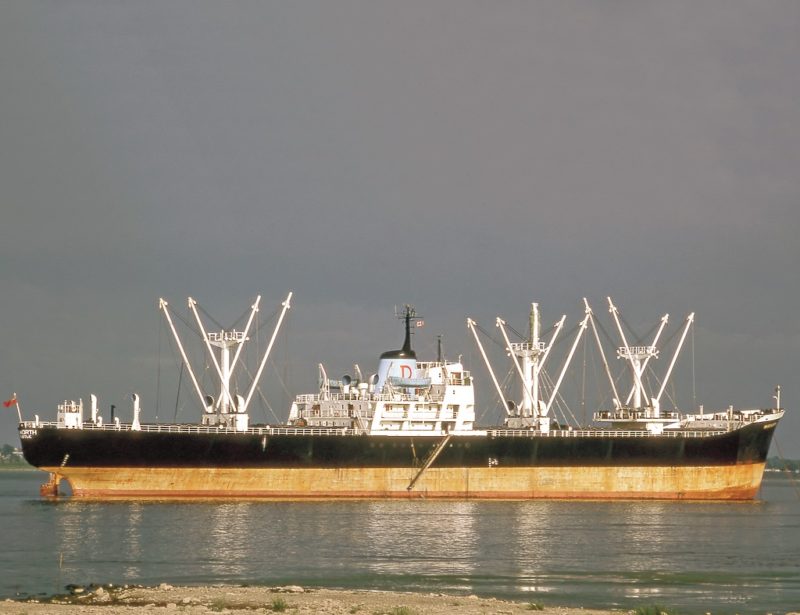
Robert Stanley Dalgleish commenced business in Newcastle in 1906 when the Dalgleish Steam Shipping Co. Ltd. was formed and an 11-year old 4,000 dwt tramp was purchased from London owners and renamed Kenilworth.
This established the pattern of nomenclature with all names ending in ‘Worth’. In 1909 the Liverpool tramp Inchmaree of 1892 was purchased but not renamed until 1911 when she became Wentworth. She was sold the following year to Norway when the first new tramp Haworth of 6,500 dwt was delivered to the company by John Priestman & Co. at Sunderland.
Her sister Wentworth (2) was delivered by the same yard in the following year, and the company thus had three tramps at the start of WWI: Kenilworth, Haworth and Wentwoth (2).
24.4.1917 Kenilworth – Mined 3nm SSW from St. Mathieu Point, Brest.
17.7.1917 Haworth – Torpedoed 94nm W of Fastnet.
2.9.1917 Wentworth – Torpedoed 36nm SW of Belle Isle.
However the company was not without a ship as the new Warkworth had been delivered in February by John Readhead & Sons Ltd. at South Shields. Farnworth was completed in June by Richardson, Duck & Co. Ltd. at Stockton followed by Plawsworth from the same yard in October. An assortment of second-hand tramps was also purchased in 1917 including the Cardiff tramp Rugbeian of John Mathias, and she became Mackworth under a new company, Watergate Steamship Co. Ltd. which was set up in December 1917.
The elderly coaster Speedwell and the Glasgow tramp Gogovale were also purchased, the latter from A. Crawford, Barr & Co. which was renamed Pennyworth. A new Kenilworth (2) was delivered at Stockton in March 1918. The last company casualty of WWI was on 13th July 1918 when Plawsworth was torpedoed and sunk 105nm NW of Bishop Rock.
At the Armistice the fleet had five deep-sea tramps:- Warkworth, Farnworth, Pennyworth, Kenilworth and Mackworth and two colliers. A huge expansion took place in the post-war boom with 14 steamers purchased, including deep-sea tramp Duns Law which had been abandoned by her owners Thomas Law & Co. of Glasgow to insurers after being caught at Nordenham in August 1914. She was purchased and renamed Ravensworth. The short-sea trader Elmpark was purchased from Denholms and a dozen standard steamers were purchased from The Shipping Controller including four deep-sea tramps renamed Wentworth (3), Ashworth, Dalworth and Glentworth, which were registered under the Dalgleish S.S. Co. Ltd. and the eight short-sea traders were renamed and placed under the Robert Stanley Shipping Co. Ltd.
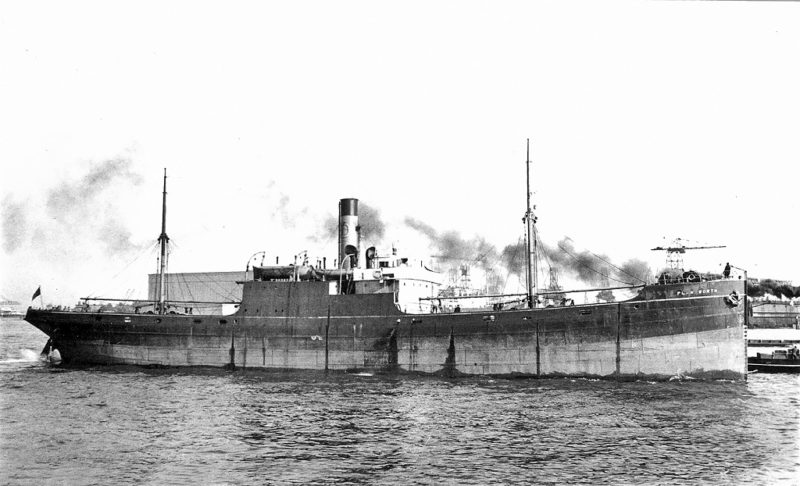
The company thus operated two distinct fleets, a deep-sea fleet and a short-sea fleet. The first was augmented by two new 9,000 dwt tramps from Richardson, Duck & Co. Ltd. at Stockton, the Illingworth and Silksworth. As freight rates began to slowly rise in 1924 so did second-hand tramp prices, and Warkworth and Farnworth were sold to London owners, while two short-sea traders Tamworth and Letchworth joined the fleet. As with other owners, the company required to compare the operating costs of the motor tramp and steam tramp and ordered two of each. The motor tramps Elmworth and Oakworth were built by A. McMillan & Sons at Dumbarton and were fitted with 6-cylinder four stroke cycle single acting diesels by Harland & Wolff Ltd., Belfast, and the steamers were Farnworth and Warkworth (2) from Blythswood SB Co. Ltd. The motor tramps were a great success and gave long service to the company and to subsequent owners, and only one more steam tramp was ever built for the company, the Isleworth of 1928. Both motor tramps survived the war with Oakworth lasting until 1967 under foreign owners until scrapped in Spain, while Elmworth lasted until 1960 when broken up in Italy.
In 1925, two more colliers were delivered, Queenworth and the first Usworth, but the latter was sold to Nigeria a year later and her name given to a deep-sea tramp which had lain incomplete on the stocks at the North Sands, Sunderland yard of John Blumer & Co. since 1921. Work restarted at the yard but only to complete the Stag Line tramp Cydonia and Usworth (2) and then promptly closed its gates for good at the beginning of 1927. In October 1928 the company owned 16 deep-sea tramps and 12 colliers and this was reduced in 1929 when the old Clyde-built tramp Ravensworth was broken up at Rosyth and the short sea trader Broadsworth was sold to Latvian owners.
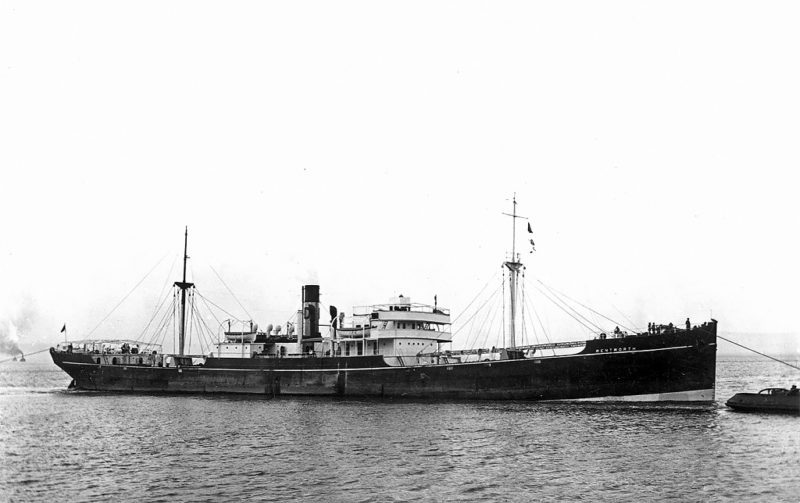
The Robert Stanley Shipping Co. Ltd. was wound up later in 1929 and the short sea traders transferred to the Dalgleish S.S. Co. Ltd. except for the Haworth which was sold to French Indo-China owners and Knebworth which became the second marine casualty of the company when wrecked near Biarritz in January 1930 on a voyage from Blyth to Bayonne with a cargo of coal. At the start of the depression in 1930 the company owned 15 deep-sea tramps and this was reduced by Mackworth arriving at Gateshead in April 1931 for scrapping. In August 1932 a company tramp first entered Port Churchill on Hudson Bay during the ice-free summer season when Pennyworth delivered a general cargo from the Tyne and lifted out 8,000 tons of grain. This trade then continued every summer except for the war years, and helped keep nearly all of the deep-sea fleet in employment during the depression although they had to go further to get it for example:-
DALWORTH
4.9.1932 – Wear, Trinidad, Kingston, Galveston (cotton), Houston, Texas City, Galveston, Liverpool, Manchester, Cardiff.
10.12.1932 – Cardiff, Genoa, Algiers (bunkers), San Pedro (bunkers), Vancouver (grain), Shanghai, French Indo-China (coal), Shanghai, French Indo-China (coal), Shanghai ( dry-dock), Saigon (rice,maize,general), Colombo (bunkers), Perim (bunkers), Port Said (bunkers), Oran (bunkers), Le Havre, Dunkirk, Cardiff.
31.8.1933 – Cardiff, Trinidad, Houston, Texas City (cotton), Galveston, Le Havre, Dunkirk, Tyne.
KENILWORTH
19.4.1932 – Tyne (coal), Porto Ferrajo, Nikolaieff (iron ore), Rotterdam, Hartlepool.
7.6.1932 – Hartlepool, Savona, New York (waste paper), Tilbury, Tyne.
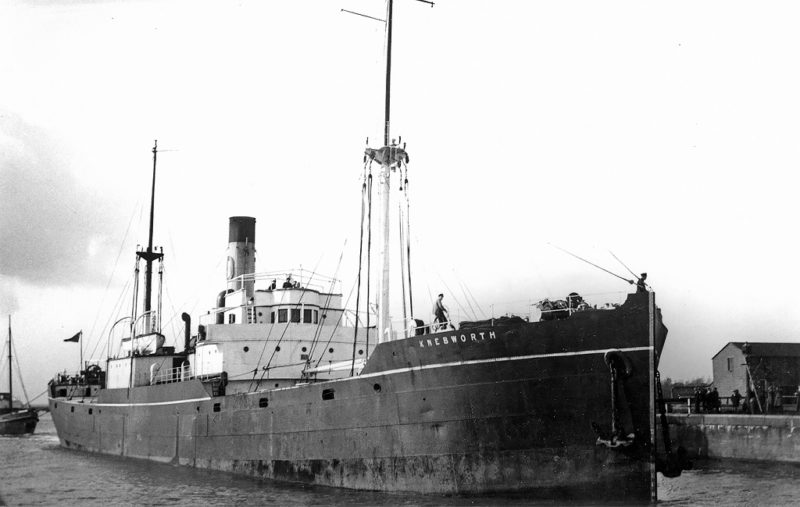
The fleet was kept intact until summer 1934 when with a slight rise in freight rates and second-hand prices Glentworth went to London Greek owners, Illingworth to Greek owners, and Farnworth to Italian owners. Usworth was then lost in a North Atlantic gale in December 1934 but her crew were rescued by fine seamanship. She had left Sydney(NS) fully-loaded for Queenstown for orders when her rod-and-chain steering gear snapped on the 13th and she was going round in circles as her auxiliary steering was useless. Captain Reed hove-to and kept her head to wind but heavy seas broke over her well-deck and loosened a hatch cover. This was replaced by a new cover but then the tramp was hit by three mountainous seas of which one was 15 feet above the truck of the foremast. She was then thrown onto her beam ends and her cargo shifted giving her a list of 25 degrees when she recovered. The seas carried away her radio aerial, stove in the forward hatches and strained the hatch coamings and beams and carried away two derricks and all the engine room skylights plus two of the three lifeboats with the third hanging smashed in a useless state in the davits. An S.O.S. was sent out using a temporary rigged aerial and this was picked up by the Belgian Jean Jadot and the Cunard liner Ascania, which turned round to help. Both ships reached Usworth before dawn on the 14th and began spreading oil on the sea. Her list had increased and a capsize became imminent so the Belgian master sent a boat away which closed to Usworth’s stern and 14 crew jumped in. Just as they were pulling away the boat capsized on the crest of an oily wave drowning 14 men of which 12 were from Usworth. Ascania now launched her lifeboat and three crew from Usworth jumped overboard to reach it but all were overwhelmed. The lifeboat then managed to lay alongside Usworth and the nine remaining crew jumped in. The exhausted men managed to pull clear, with Ascania providing a lee by steaming round the bow of Usworth and stopping some 100 feet to windward. All the men in the lifeboat were hauled to safety and the damaged boat cut free to founder with Usworth shortly after. Only 9 of the 24 crew of Usworth had survived, and two brave Belgian seamen had given their lives for them.
The ex-Clyde tramp Pennyworth was sold to Canadian owners in 1935, and Dalworth was sold to fellow Novocastrians, Connell & Grace Ltd. and renamed Simonside. Kenilworth and Silksworth were transferred to a new company, Worth Steam Shipping Co. Ltd. in 1935 and sold the following year to Far East owners, with no further ships registered under the new company. Two colliers, Whitworth and Hunstantonworth were sold in 1936, and the pioneer motortramp Elmworth was sold to Norwegian owner Butler Wang in 1937. Further departures were the 11 year old steamer Isleworth in 1939 and the colliers Coatsworth and Backworth, leaving the fleet at 4 tramps and 4 colliers at the start of WWII.
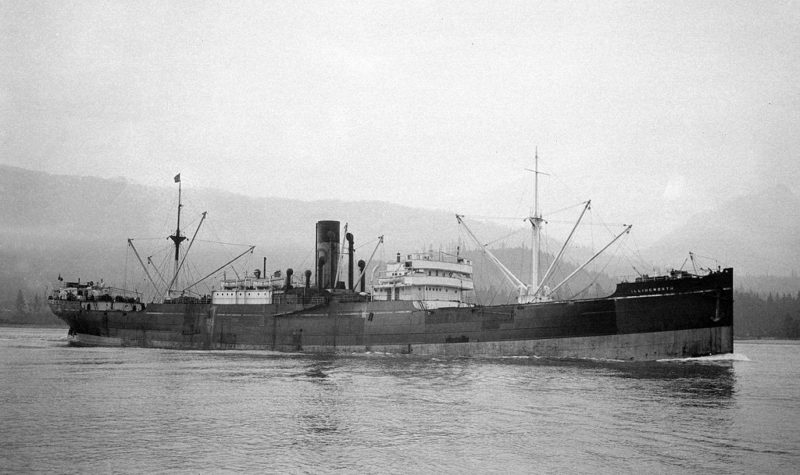
Tamworth narrowly escaped destruction on Boxing Day 1940 when she was the centre ship of three vessels queuing to get into London docks. The leading and trailing vessels both exploded acoustic mines but Tamworth sailed luckily through undamaged. The subsequent war losses were:-
1.11.1940 Letchworth – Air attack in North Sea.
9.5.1941 Queenworth – Air attack in North Sea.

10.10.1941 Warkworth – Collision to W of Rockall with Selvistan.
6.4.1942 Silksworth – Japanese warship off Puri in Bay of Bengal.
20.4.1942 Plawsworth – Mined near Aldeburgh buoy.
13.10.1942 Ashworth – N. Atlantic Capt.Mourat and all hands lost.
5.5.1943 Wentworth – Torpedoed off Labrador.
The Dalgleish Steam Shipping Co. Ltd was wound up in 1943 and its two remaining vessels, the motortramp Oakworth and the collier Tamworth transferred to the Watergate Steam Shipping Co. Ltd. The CAM-ship Empire Stanley with her Hurricane fighter on her bow was managed for a year in 1941 plus two small Danish steamers of which one was lost.
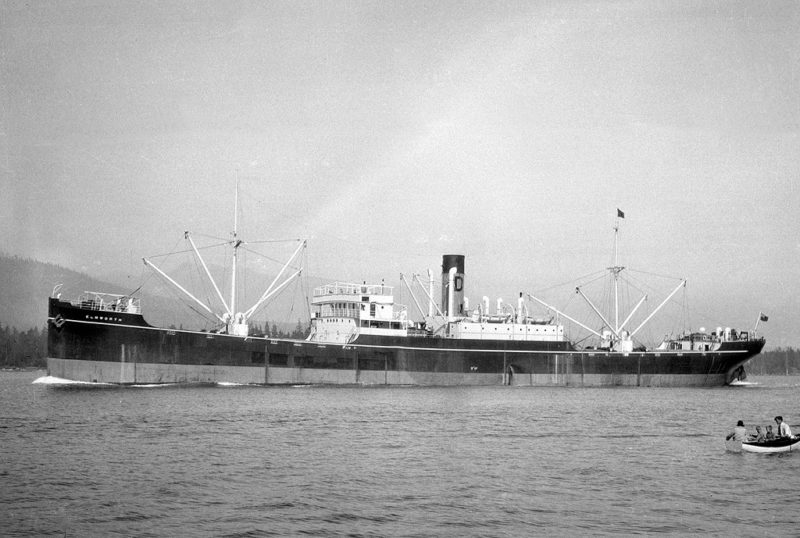
The standard colliers Empire Caxton of 4,200 dwt and Empire Citizen of 2,900 dwt were also managed and both were purchased in 1945 and renamed Letchworth and Queenworth respectively.
The only surviving deep-sea tramp Oakworth was sold in 1947 to Norwegian owners, and the collier Tamworth was also disposed of to Maltese owners. This left the two standard colliers Letchworth and Queenworth as the only owned vessels until 1950 when a Canadian-built Fort tramp was purchased and renamed Warkworth (4). Four of her sisters had been managed by the company for the Government in 1949. Warkworth then loaded in the Tyne every summer for the next seven years for the annual ice-race into Port Churchill and regularly won the prize of a cane walking stick for her master as the first ship to arrive.
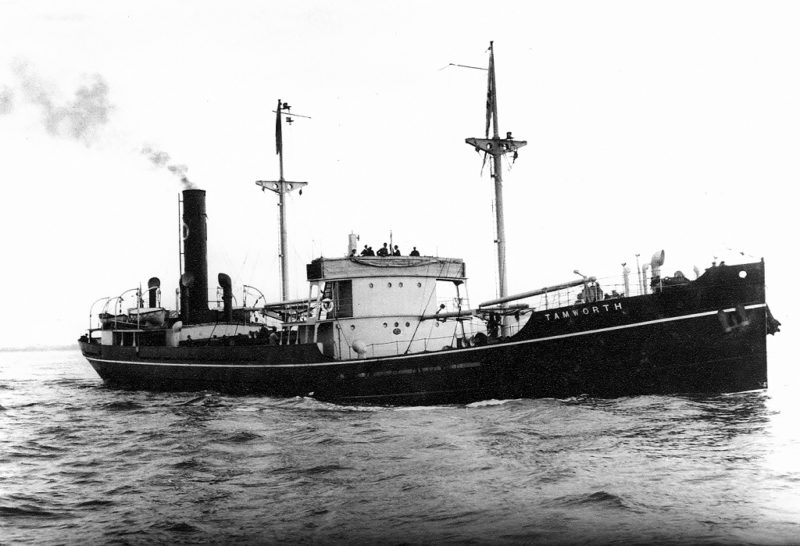
The company also started to manage in 1950 the first sugar carriers owned by Tate & Lyle Ltd., three standard WWII types, and continued to do so until 1952 when the sugar company took over.
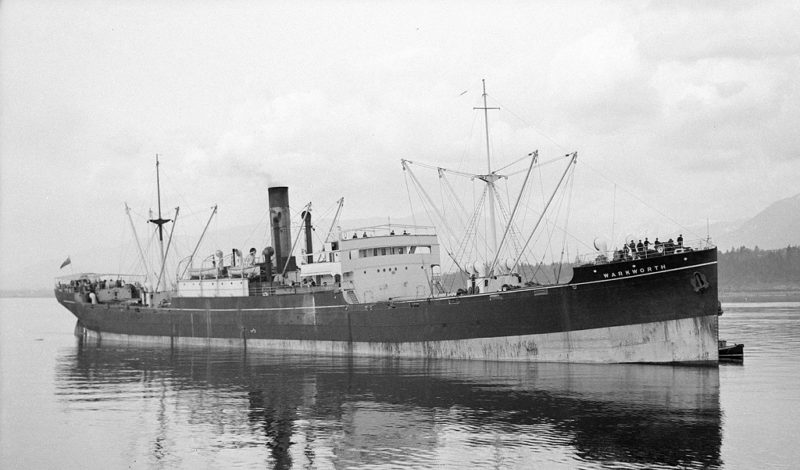
Warkworth tramped world-wide until sold in 1957. The collier Letchworth had been sold in 1956 to London owners leaving only Queenworth to sail on alone for a year on the North E
The first bulk-carrier owned by the company was Silksworth of 24,840 dwt built by J.L. Thompson & Sons Ltd. at Sunderland in May 1964. She first won the ice-race into Port Churchill in 1968 by entering the port on 26th July after a nine day voyage from the Tyne. The smaller bulker Tamworth of 16,425 dwt was delivered in September of that year by Austin & Pickersgill Ltd.
In late 1969 the Watergate Steam Shipping Co. Ltd. was acquired by Lonrho, the London investment company. The tramp Warkworth, bulkers Tamworth and Silksworth, and ore-carriers Pennyworth and Ravensworth were included in the deal as was a bulker on order at Cammell,Laird & Co. Ltd. at Birkenhead.

Peter Dalgleish, son of the founder, remained as Chairman and his son Nicholas Dalgleish remained a Director. The management company of R.S. Dalgleish & Co. Ltd. was not taken over and remained as managers of the Watergate company.
The ice-race winner Warkworth was sold for £830,000 in 1970 (more than she cost to build) to Greeks and was handed over at Birkenhead in October and renamed Skymnos.
She had nearly missed the ice-race that year into Port Churchill as a dockers strike on the Tyne in July meant that she and Silksworth were late away. Silksworth won from Warkworth by seven hours. They were joined later in the month by the new bulker Starworth which sailed from the Tyne on 24th August to load steel in the U.S.A. She was well equipped for this trade, having had two large Munck gantry cranes fitted at Bergen, home port of the Star Shipping A/S consortium which had long-term chartered her.
Silksworth was sold for £1.l million in 1972 to Somali owners, with Pennyworth and Ravensworth completing their long-term BISCO charters in 1973 and 1975 and being sold to Greeks and Houlder Brothers respectively. Ravensworth then arrived at Kristiansand on 22nd November 1975 to be converted into a pipe-layer.

This left Tamworth, Starworth and the three sister bulk-carriers Letchworth, Oakworth and Naworth of 34,400 dwt completed in 1972/73 by Cammell, Laird & Co. Ltd.
In 1974 the Watergate Steam Shipping Co. Ltd. was sold again, this time to Kristian Jebsen (U.K.) Ltd., although once again management remained with the Newcastle company.
Starworth was sold to the Fred. Olsen owned Blandford Shipping Co. Ltd. in 1976, and Tamworth was sold to Italian owners in 1977. An order for an SD14 was then placed with Austin & Pickersgill Ltd. and this was duly launched on 14th July 1978 as Dalworth. However the name was painted out two days later as the company was having difficulty in making the staged payments. Dalworth was completed as Song Duong in February 1979 by which time the three sister bulkers had been sold to Hong Kong owners. Naworth was the last to be renamed, and the company then went into liquidation and the proud blue houseflag with the red ‘D’ which had flown on the oceans of the world for over 70 years disappeared forever.

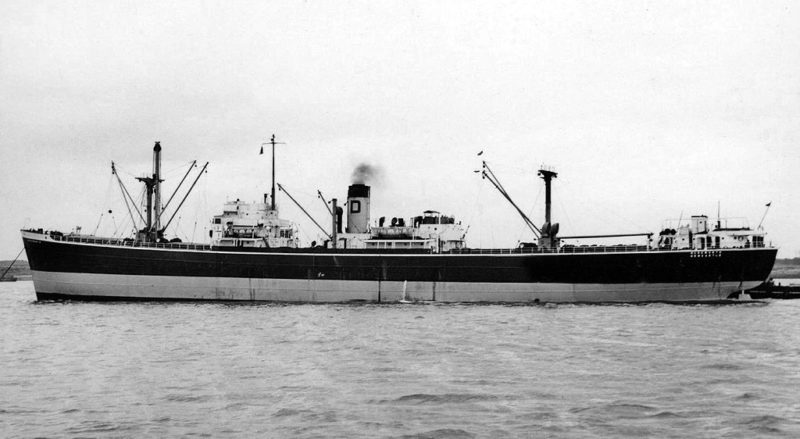
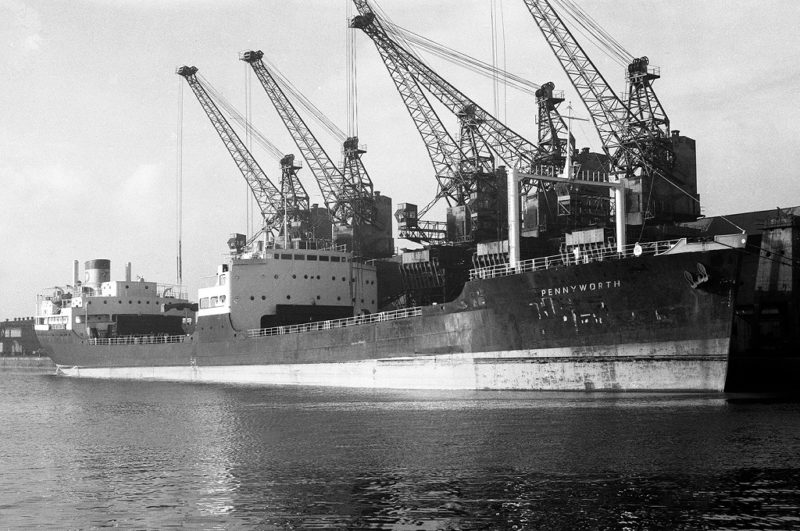





Comments
Sorry, comments are closed for this item